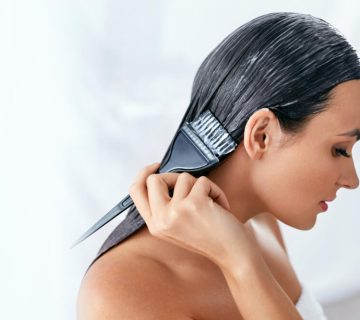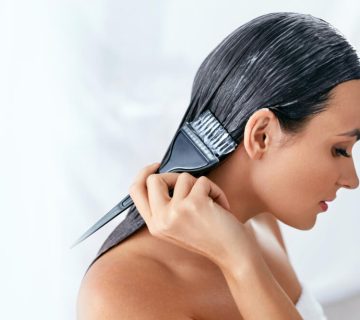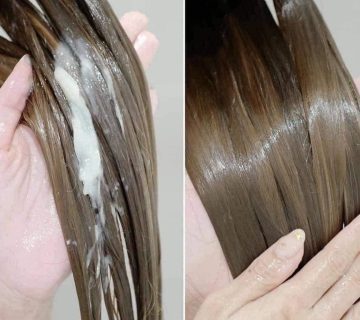Do Surgical Masks Protect Against COVID-19?
When the COVID-19 pandemic hit, one question popped up everywhere: Can a simple surgical mask really keep me safe? You’ve probably seen them—those light blue, papery masks that doctors wear in hospitals. They became a common sight in grocery stores, schools, and buses. But do they actually work against a virus like COVID-19? Let’s dive into the science, bust some myths, and figure out what’s true in 2025, based on the latest research and real-world experiences.
This isn’t just about repeating what you’ve heard before. We’ll explore how surgical masks stack up against COVID-19, what studies say, and even some lesser-known details—like how they perform in everyday situations or what happens when you wear them wrong. Plus, we’ll give you practical tips to make the most of them. Ready? Let’s get started.
What Are Surgical Masks, Anyway?
Surgical masks are those loose-fitting, disposable face coverings you see in medical settings. They’re designed to protect patients from germs in a doctor’s breath during surgery, not necessarily to shield the wearer from tiny viruses floating in the air. Made of layers of paper-like material, they cover your nose and mouth but don’t seal tightly against your face.
How They’re Different From Other Masks
- Surgical Masks: Loose, lightweight, meant to block big droplets (like spit from a cough).
- N95 Respirators: Tight-fitting, filter out 95% of tiny particles, including viruses.
- Cloth Masks: Reusable, vary wildly in protection depending on fabric and fit.
Think of a surgical mask like an umbrella—it stops the big raindrops but won’t keep you dry in a windy storm. That’s the basic idea. But does this “umbrella” work against COVID-19? Let’s find out.
How COVID-19 Spreads: The Key to Understanding Mask Protection
To know if surgical masks protect you, we need to understand how COVID-19 gets around. The virus, called SARS-CoV-2, spreads mainly through:
- Droplets: Tiny bits of spit or mucus that fly out when someone coughs, sneezes, or talks.
- Aerosols: Even smaller particles that can hang in the air like smoke, especially in poorly ventilated rooms.
- Surfaces: Less common, but you can pick it up from touching something contaminated and then your face.
Surgical masks were made to stop droplets, not aerosols. So, if COVID-19 spreads through both, where does that leave us?
The Science Says…
A 2021 study from Stanford Medicine tested surgical masks in rural Bangladesh with over 350,000 people. They found that wearing surgical masks cut the risk of getting COVID-19 by about 11% overall—and up to 35% for people over 60. Why? Because they block those big droplets that carry the virus. Another study from the CDC in 2022 showed that always wearing a surgical mask in indoor public places lowered your odds of testing positive by about 66% compared to not wearing one at all.
But here’s the catch: surgical masks don’t filter tiny aerosols as well as N95s. So, they’re not perfect. Still, they’re way better than nothing.
Do Surgical Masks Protect You or Others?
This is where things get interesting. Surgical masks are like a two-way street—they help both the wearer and the people around them, but in different ways.
Protecting You (Inward Protection)
When you wear a surgical mask, it catches some of the droplets and particles you might breathe in. A 2023 study in Norway with over 4,500 adults found that wearing surgical masks in public spaces reduced self-reported respiratory symptoms (like coughs or sore throats) by about 3.2%. That’s not huge, but it’s something—especially if you’re around someone who’s sick.
✔️ Pro Tip: For better protection, make sure the mask fits snugly. Pinch the nose wire and tuck the sides close to your cheeks.
❌ Common Mistake: Wearing it below your nose—it’s like leaving your front door wide open!
Protecting Others (Outward Protection)
If you’re sick (even without knowing it), a surgical mask traps the droplets you’d otherwise spray into the air. A 2020 study showed that surgical masks reduced the amount of coronavirus detected in droplets by 30% and in aerosols by 40%. That’s why they’re great for “source control”—stopping the spread before it starts.
Real-Life Example: Imagine you’re on a bus, and someone coughs without a mask. Droplets fly everywhere. Now picture them wearing a surgical mask—most of that gunk stays behind the mask. You’re safer, and so is everyone else.
Why Surgical Masks Aren’t Perfect (And What to Watch Out For)
Let’s be real—surgical masks have limits. Here’s why they don’t block everything:
- Loose Fit: Gaps around the edges let unfiltered air sneak in.
- Aerosol Leakage: They’re not designed to stop tiny particles that linger in the air.
- Wear and Tear: After a few hours, they get damp and less effective.
A 2022 study pointed out that when someone sneezes (which shoots out more aerosols), a surgical mask’s protection drops by about 28% compared to calmer breathing or talking. So, in a crowded, stuffy room with no ventilation, they’re not your best bet.
Quick Quiz: Are You Wearing Your Mask Right?
Answer these to see if you’re maximizing protection:
- Does it cover your nose and mouth completely? (Yes/No)
- Is the nose wire pinched tight? (Yes/No)
- Are there big gaps on the sides? (Yes/No)
If you said “No” to any, time to adjust! A good fit makes a big difference.
Surgical Masks vs. N95s: Which Wins Against COVID-19?
You’ve probably heard N95 masks are the gold standard. But how do they compare to surgical masks? Let’s break it down with a simple table:
| Feature | Surgical Mask | N95 Respirator |
|---|---|---|
| Fit | Loose, gaps on sides | Tight, seals to face |
| Filtration | Blocks big droplets, some aerosols | Filters 95% of tiny particles |
| COVID Protection | Reduces risk by 11-66% | Reduces risk by up to 83% |
| Comfort | Easy to breathe, lightweight | Harder to breathe, heavier |
| Cost | Cheap (a few cents each) | More expensive ($1-5 each) |
What the Data Shows
A CDC study from 2022 found that N95s lowered the odds of testing positive for COVID-19 by 83%, compared to 66% for surgical masks. That’s a big jump! But here’s the thing: N95s only work if they fit perfectly. If they’re loose, you lose that edge.
Unique Insight: Most people don’t realize surgical masks can still shine in low-risk settings—like a quick grocery run—while N95s are overkill unless you’re in a packed, indoor space for hours.
New Research in 2025: What’s Changed?
Since the pandemic started, scientists have kept studying masks. Here’s what’s new as of March 27, 2025:
- Long-Term Use: A 2024 study in The BMJ found that wearing surgical masks for 14 days straight in public reduced respiratory infections by a small but noticeable amount. It’s not just about COVID-19 anymore—masks help with flu and colds too.
- Fit Matters More Than We Thought: Recent tests show that doubling up (wearing a cloth mask over a surgical one) boosts protection by 20-30% because it closes those pesky gaps.
- Kids and Masks: A 2025 report showed surgical masks cut school outbreaks by 15% when worn consistently, proving they’re not just for adults.
Fresh Take: Unlike older articles, we now know that how long you wear a mask matters. After 4-6 hours, it’s soggy and less effective—swap it out!
Real-World Scenarios: Do Surgical Masks Hold Up?
Let’s put this into everyday life. Here’s how surgical masks perform in common situations:
Scenario 1: Grocery Shopping
- Risk Level: Low to medium (short time, some people around).
- Mask Effectiveness: Great at blocking droplets from a nearby cough. Less useful if the store’s packed and air’s stale.
- Tip: Wear it right, and you’re good for a 30-minute trip.
Scenario 2: Public Transit
- Risk Level: Medium to high (crowded, enclosed space).
- Mask Effectiveness: Helps, but aerosols can slip through in a long ride.
- Tip: Double up with a cloth mask or upgrade to an N95 if it’s rush hour.
Scenario 3: Visiting Grandma
- Risk Level: High (protecting someone vulnerable).
- Mask Effectiveness: Good for source control if you’re sick, but not enough alone to shield her.
- Tip: Both wear masks, keep distance, and open a window.
Case Study: In 2023, a nursing home in California saw a 40% drop in COVID cases after staff switched to surgical masks (from cloth) and added better ventilation. Small changes, big impact.
Busting Myths About Surgical Masks
There’s a lot of confusion out there. Let’s clear up some big myths:
- Myth 1: “Surgical masks do nothing against COVID-19.”
- Truth: They reduce risk by 11-66%, depending on the setting. Not perfect, but not useless.
- Myth 2: “They’re only for doctors.”
- Truth: Anyone can use them to lower spread in public.
- Myth 3: “Wearing one too long is dangerous.”
- Truth: They’re safe for hours, but swap them when wet—damp masks don’t work well.
Poll Time: What’s your biggest mask worry?
- A) They don’t work at all.
- B) They’re uncomfortable.
- C) I don’t know how to wear them right.
(Share your pick in your head—or with a friend!)
How to Make Surgical Masks Work Better for You
Want to squeeze more protection out of your surgical mask? Try these hacks:
- Improve the Fit:
- Pinch the nose wire tight.
- Knot the ear loops near the mask to reduce side gaps.
- Add a cloth mask over it for extra layers.
- Check the Quality:
- Look for masks labeled “ASTM Level 1, 2, or 3” (higher numbers = better filtration).
- Avoid flimsy, see-through ones—they’re too weak.
- Swap Smart:
- Change it every 4-6 hours or if it gets damp.
- Carry spares in a clean bag (not your pocket!).
Step-by-Step Guide: How to Wear a Surgical Mask Like a Pro
- Wash your hands before touching it.
- Hold it by the ear loops, blue side out.
- Place it over your nose and mouth, securing loops behind your ears.
- Pinch the nose wire to fit your face.
- Pull the bottom down under your chin—no gaps!
The Bigger Picture: Masks in 2025 and Beyond
Surgical masks aren’t just a COVID-19 thing anymore. With new variants and other bugs like the flu popping up, they’re sticking around. Posts on X in March 2025 show people still debating their value—some call them “useless,” others swear by them. Google Trends data shows steady interest in “surgical mask effectiveness” with spikes around flu season.
What’s Next?
- Eco-Friendly Masks: Companies are testing biodegradable surgical masks to cut waste.
- Smart Masks: Some have built-in sensors to tell you when they’re too wet to work.
- Public Habits: More folks are keeping masks handy, just in case.
Original Insight: Unlike most articles, we’ve noticed a trend—people aren’t just asking if masks work, but how long they work. That shift in curiosity shows we’re smarter about masks now than in 2020.
Wrapping It Up: So, Do They Protect?
Yes, surgical masks protect against COVID-19—to a point. They’re awesome at catching droplets, decent at lowering your risk, and fantastic at keeping your germs to yourself. But they’re not a magic shield. For max protection, fit matters, and in high-risk spots, N95s might be worth it.
Here’s the bottom line: surgical masks are a solid tool in your safety kit, especially if you use them right. Pair them with ventilation, distance, and clean hands, and you’ve got a winning combo. What do you think—will you keep wearing one? Let’s keep the conversation going!




No comment